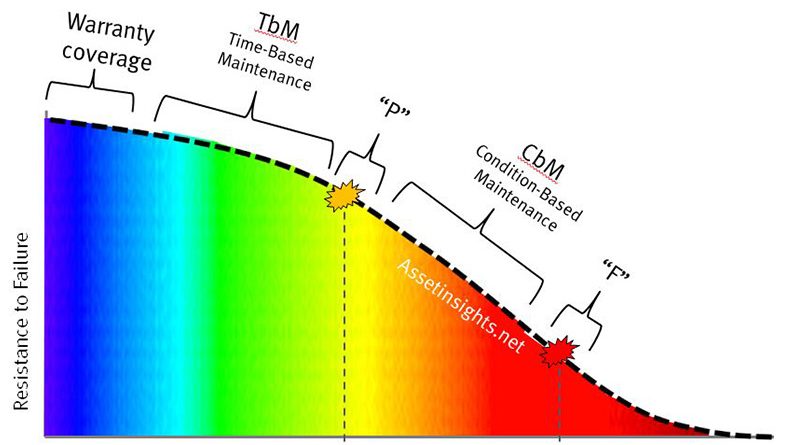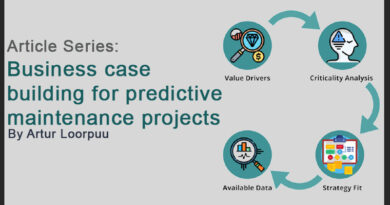Continuous Predictive Maintenance Is the Way Forward
Over the last few years, the continuous improvement of maintenance strategies is taking place at an incredible pace. The rapid influx of accessible data has the industrial world living in exciting times. As the industry just begins to scratch the surface of what the Industrial Internet of Things (IIoT) can deliver, there is a tremendous opportunity to displace antiquated ways of carrying out asset management.
Continuous monitoring of critical equipment and real-time access to predictive analytics have the ability to provide consistent and reliable insights that may have been only available in limited quantities using legacy systems. Enterprises, large and small, are looking at upgrading their existing condition monitoring technologies to include continuous monitoring as a means of staying competitive within a global economy.
Continuous PdM as a Foundational Element
Throughout the years, at facilities large and small, many maintenance models have been implemented, including run to failure, preventive maintenance (PM) and predictive maintenance (PdM). There has been a swift and vast evolution of technology, from transferring data on floppy disks to the advent of cloud computing. However, gaps will exist, which is where continuous PdM comes into play as a foundational element of helping businesses meet their asset management goals.
 When Critical Assets Fail
When Critical Assets Fail
It is never a good day when critical assets fail unexpectedly. A maintenance reliability strategy can be as much an art as it is science. Unfortunately, the days of relying solely on folks walking the shop floor as the primary means of work identification have passed. The advent of such tremendous technology, coupled with the current employment trends, presents a situation where you no longer have that lifelong employee who can walk into a space and just know by the sound, smell, or feel of the floor that something is wrong. You still need to know what is wrong, but now that resident tribal knowledge can be acquired through wireless sensors and feeding data from existing instrumentation into a machine learning system.
You probably have been witness to failures where continuous monitoring would have significantly increased the likelihood that a defect was caught before it resulted in a loss to the business. Take this example, for instance: One particular area, which housed temperature sensitive material, required 24/7/365 adherence to strict environmental parameters. A defect in the area’s cooling system resulted in a loss of temperature control. By the time the error was noticed, it was too late to salvage the material.
Here’s how continuous PdM could have been beneficial in this case: There was a high temperature alarm in place as a lagging indicator. Had there been alerts to leading indicators of the system’s compromised condition, such as a deviation in the compressor’s normal cycle time or a trend of motor current, it could have caused a proactive investigation of the root cause. At the very least, some level of warning could have triggered a temporary move of the temperature sensitive material while operational checks where performed on the system. Unfortunately, that was not the case.
Another event where continuous monitoring would have benefited system reliability involved a supply air fan for a large, multistory building that contained critical operations for a business. One of the two fans supplying fresh air to the building experienced a catastrophic failure. The 75 HP motor driving a 5½-inch fan shaft seized, resulting in the need to completely rebuild the unit. Though the asset was included on the site’s vibration monitoring program, the fault appeared to progress faster than what the inspection frequency was able to detect. Not only did the business have to absorb the emergency repairs, but the circumstances then created a single point of failure in the other fan, putting critical operations at a higher risk while repairs were completed.
When critical assets fail, there are enormous cost and productivity implications on the facility’s overall operations. In most instances, continuous monitoring increases the detectability of occurrence by alerting personnel at the earliest point possible.
 Conclusion
Conclusion
The rapid evolution of technology in a span of less than 10 years is fascinating. The barrier to entry in terms of cost for continuous PdM has been largely mitigated. Plants and facilities already are spending money on managing their assets in terms of reliability initiatives and predictive maintenance. The industry is going in the direction of not spending additional capital, but in reallocating on a smarter spend.
Technology drivers, like artificial intelligence and cloud computing, have expanded what is possible to unfathomable proportions. Knowing what’s brewing within your key industrial assets at all times was something typically reserved for only the largest and top revenue producing locations. But not anymore! Today, there are solutions out there that deliver on-demand predictive maintenance at great price points. With quality data and actionable intelligence readily available and accessible, businesses are able to ensure world-class reliability of their critical assets.




